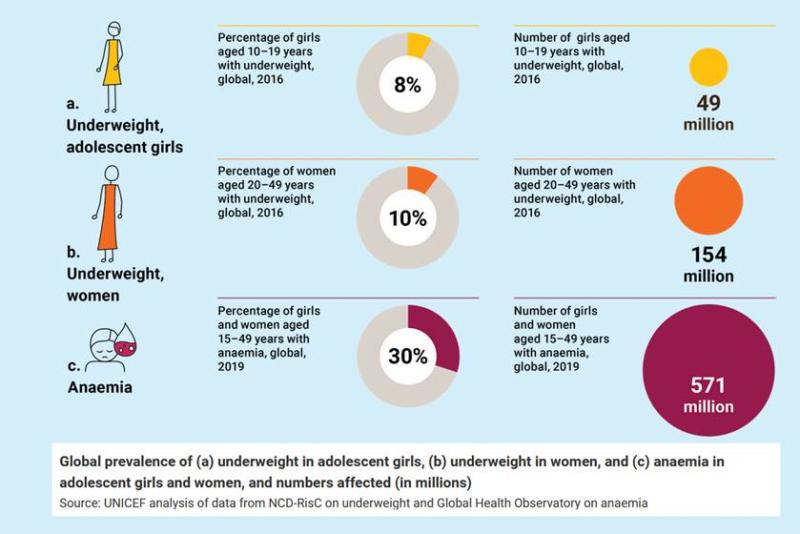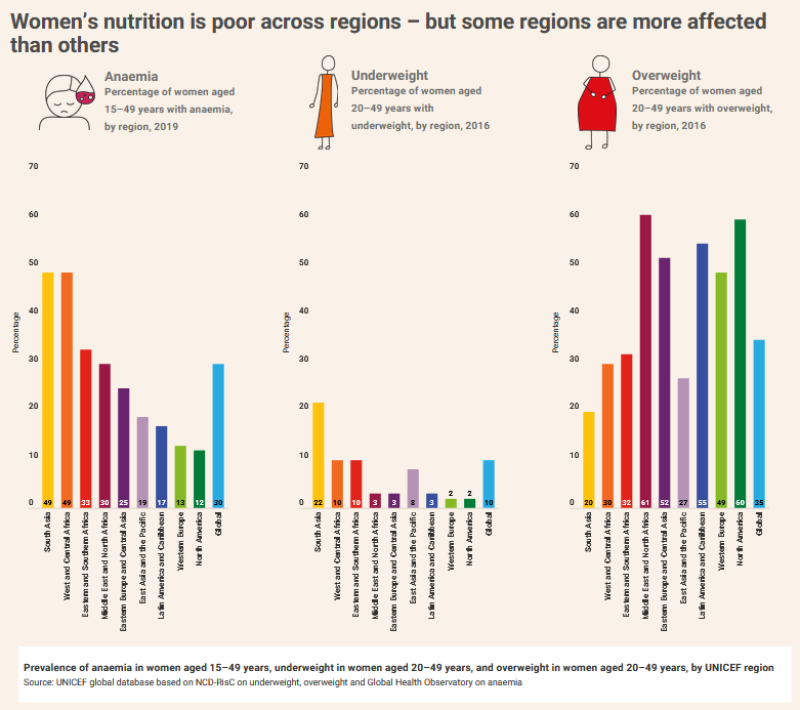The report assesses the nutritional status (current and trends) of adolescent girls and women of reproductive age (15-49 years), with a particular focus on undernutrition, micronutrient deficiencies and anaemia. The report’s findings reveal a lack of progress on nutrition in adolescent girls and women over the past two decades. Adolescent girls and women are struggling with accessing nutritious diets and essential nutrition services and social protection programmes are failing to meet their needs. Acute malnutrition has risen by 25 per cent since 2020 in crisis-hit countries. The largest burden of undernutrition and anaemia is seen in disadvantaged girls and women and those living in poorer regions. Poor nutrition is passed on to the next generations, and impact could last for generations to come. South Asia and sub-Saharan African remain the epicenter of the nutrition crisis among adolescent girls and women, home to 2 in 3 adolescent girls and women suffering from underweight globally, and 3 in 5 adolescent girls and women with anaemia. The scale and consequences of undernutrition, micronutrient deficiencies and anaemia in adolescent girls and women are being overlooked and under recognized. This nutrition crisis is further deepened by the global food crisis.


| Year of publication | |
| Geographic coverage | Global |
| Originally published | 09 Mar 2023 |
| Related organisation(s) | UNICEF - United Nations Children's Fund |
| Knowledge service | Metadata | Global Food and Nutrition Security | Nutrition | Gender mainstreamingGender-related dataHealthy dietSafety netSex disaggregated data |
| Digital Europa Thesaurus (DET) | nutritionpublic healthwomanmalnutritionpublic hygieneimpact studyVulnerable groups |
